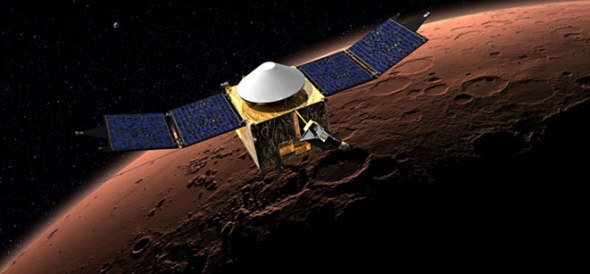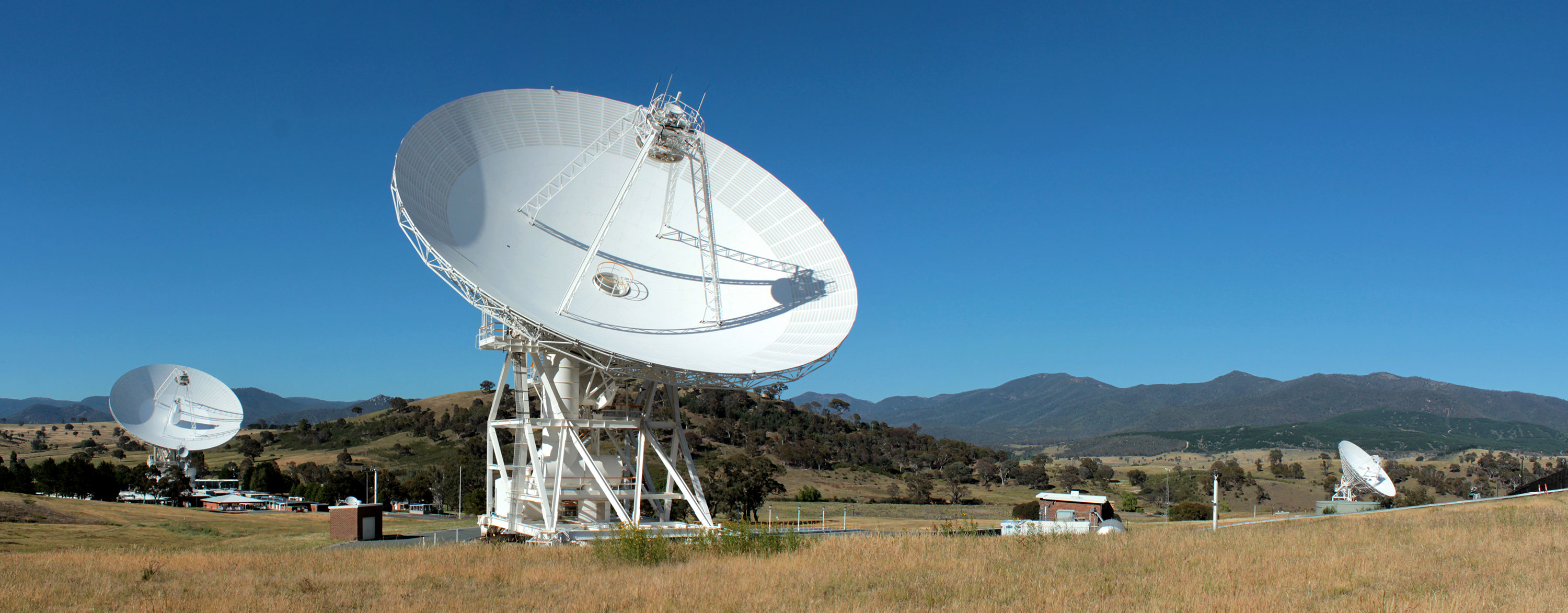MAVEN – Artists impression of NASA’s latest spacecraft to explore the red planet. Image: NASA/JPL
In a ‘text book’ launch, NASA’s MAVEN spacecraft roared off its pad at Cape Canaveral and disappeared into a cloud covered Florida sky, heading off on a 10-month, 500 million kilometre journey to Mars.
The Mars Atmosphere Volatile EvolutioN mission will orbit Mars to explore how the sun may have stripped Mars of most of its atmosphere, turning a planet once possibly habitable to microbial life into a cold and barren desert world. MAVEN will be the first spacecraft mission dedicated to exploring the upper atmosphere of Mars.
Previous missions to Mars have shown that the atmosphere and climate have changed over time and found evidence of abundant liquid water on the surface in ancient times, though not today. Scientists want to know what happened to the water and where the planet’s thick atmosphere went. The MAVEN mission will study the nature of the red planet’s upper atmosphere, how solar activity contributes to atmospheric loss, and the role that escape of gas from the atmosphere to space has played through time.
Less than an hour after launch, the MAVEN rose above the western horizon of the Canberra Deep Space Communication Complex. The CSIRO managed, NASA tracking station just outside of Canberra is a part of NASA’s Deep Space Network providing radio communication to dozens of robotic spacecraft exploring the solar system and beyond.
Making contact with the spacecraft “bang on time” as one of the Canberra team stated, the Complex was able to confirm to NASA and waiting mission scientists, that MAVEN had successfully separated from its launch vehicle and was now safely on its way to Mars.
Deep Space Listening: Antennas at the Canberra Deep Space Communication Complex in contact with NASA’s MAVEN spacecraft as it started its journey to the red planet. Photo: K.McDonnell
Giant antenna dishes at the CSIRO facility will continue to track the spacecraft throughout its 10-month journey to Mars. Due to arrive at the planet on 22nd September 2014, the MAVEN spacecraft will start a two-year long study of the upper layers of the Martian atmosphere to try and reveal a multi-billion year story of loss of Mars’ once thicker atmosphere and some of its water to space. The study will add to the data returned by other missions that are studying lower layers of the atmosphere, weather patterns and the interaction between land and sky. It will complement the information collected by NASA’s Mars rovers, ‘Curiosity’ and ‘Opportunity’ which have already shown that the now dry desert planet once had rivers, lakes and oceans.
The Canberra Deep Space Communication Complex is managed on NASA’s behalf by the CSIRO through its Astronomy and Space Science division. The Complex is staffed by an Australian team of 100 dedicated engineers, technicians and spacecraft communication experts.



